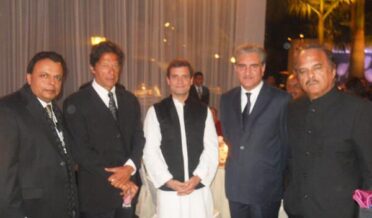
This month, the Kashmir Press Club, the umbrella organization for journalists in the Indian-administered state of Jammu and Kashmir, issued a statement condemning the arrest of a young trainee reporter named Sajad Gul. On Jan. 5 he was arrested by the Indian Army; though initially granted bail by a local court, he was soon detained yet again on a different set of charges. Reporters Without Borders, the Paris-based journalism advocacy organization, warned that Gul now faces the possibility of six years in prison. His apparent offense? A single tweet that linked to a video clip showing a protest over the killing of a separatist activist.

The Kashmir Press Club has paid a heavy price for its courageous statement of support for Gul. First the police raided the organization?s building, then disbanded the club altogether. The authorities took over the building on Jan. 17. Even though the New York-based Committee to Protect Journalists has documented numerous cases of harsh treatment of journalists in Kashmir over the years, the crackdown on the press club is unprecedented.
Why is the Indian government ruthlessly trying to silence the Kashmiri media? The simple answer is that Delhi has launched a new effort to assert greater control over the territory, and journalists (and human rights activists) are squarely in the way.
Story continues below advertisement
Jammu and Kashmir is a disputed territory. This former princely state is surrounded by three nuclear powers ? India, Pakistan and China. These three powers control three different parts of the state, and India and Pakistan have fought at least three wars on its territory. Kashmir can be seen as a kind of Palestine dispute in South Asia. Political turmoil there has left the state without an elected assembly since 2018, leaving it under direct rule from Delhi and with only limited representation in the Indian parliament.
In August 2019, the Indian government revoked the autonomy of its part of Jammu and Kashmir. Top Kashmiri leaders were subsequently arrested. Some of them were later released and met with Indian Prime Minister Narendra Modi. Some of them want Delhi to restore the state?s special status. This is a popular demand of Kashmiris. But Modi has different plans in his mind. He wants to redraw the region?s electoral map. That is likely to increase the number of seats for the Hindu-dominated Jammu region in the state assembly.
Jammu and Kashmir is India?s only Muslim-majority region, but now the Modi regime is trying to engineer an electoral majority for his ruling Bharatiya Janata Party (BJP) there. It is no longer a secret that Modi is planning to install a Hindu chief minister in Kashmir. Those Muslim leaders who stood by India felt betrayed. They rejected the redistricting plan and some of them were detained again in December 2021. These anti-BJP politicians are not the only obstacle for Modi?s plans. Independent Kashmiri media voices are another.
There is a systematic crackdown against dissenting voices in India, but it?s especially ferocious in Jammu and Kashmir. Summoning journalists for police questioning and raiding their houses has become routine. Gul, whose arrest triggered the latest crisis, recently recalled how the police stormed his home in Oct. 2021. ?Ever since the raid, I have barely slept at night,? he told an interviewer with the Diplomat. ?I feel the police might raid my house again.? He was right. His prediction came true this year, when the world?s biggest democracy in the world threw him behind bars with the help of its draconian security law. (It?s worth noting, of course, that the situation of the media in Pakistani-administered Kashmir isn?t much better ? as shown in several highly critical reports from reputable international observers.)
Gul is not the only journalist imprisoned in Kashmir. One of his colleagues, Aasif Sultan, who won an American award in 2019, was arrested after he wrote a profile of a slain separatist. He was charged for collaborating with terrorists ? but the police have failed to produce any evidence against him. I?ve spoken with many journalists in Srinagar and Jammu. Many of them told me that police officials often call them, threatening them with the same arbitrary arrest endured by Sultan.
Female journalists in Kashmir are also facing the wrath of Indian authorities. The talented photojournalist Musrat Zahra has won many international awards. Charged in April 2020, she is facing a sentence of up to seven years in prison. Why? For posting some pictures on social media. Recently another young Kashmiri female journalist wrote about her interrogation by the police and army, only to find herself subjected to a vicious campaign of online harassment.
Story continues below advertisement
These threats are not confined to Muslim journalists. Anuradha Bhasin is a Hindu journalist who has also become a target due to her independent stance. She is the editor of the oldest English daily Kashmir Times. Her newspaper faces harassment by state authorities along with many other newspapers that defy the security forces. In 2020, officials blocked advertisements for 13 newspapers and cited 17 others for alleged ?malpractice.?
The latest action against the Kashmir Press Club is a message to all Kashmiri journalists to surrender their independence. The crackdown will only create more tension and more hatred. Muslim Kashmiris are already facing concerted death-threat campaigns from Hindu extremists. This action will encourage those who are publicly advocating flaying as punishment for dissenting voices. Modi can shut down the Kashmir Press Club, but he cannot lock down the minds of Kashmiris.







